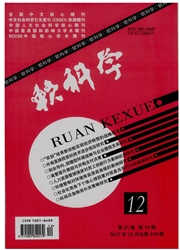

 中文摘要:
中文摘要:
以西安地区为研究对象,采用1990年和2000年两期遥感影像,综合遥感与GIS技术、马尔可夫模型,分析了土地利用变化的空间特征。在研究区划分出林地、牧草地、建筑用地、未利用地、耕地、园地和水域共7个土地利用类型,据此建立起1990—2000年土地利用变化转移矩阵,并分析了研究区的土地利用变化幅度。结果表明,10年间西安地区建筑用地、园地呈增长趋势,林地、牧草地、未利用地、耕地、水域呈减少趋势。进一步分析表明,该区土地利用变化的驱动力主要为人口压力、经济因素、宏观政策,这3方面共同影响着土地利用变化。
 英文摘要:
英文摘要:
In this paper,the spatial characteristics of LUCC caused by LUCC in the Xi'an region were lucubrated based on the RS images acquired in 1990 and 2000,integrated with RS and GIS means and Markov model.The land-use types of the case study site could be classified into woodland,grassland,building land,uncultivated land,cultivated land,garden plot and water body.Based on the classification,the transfer matrix of LUCC from 1990 to 2000 was made.The results showed that the building land and garden plot were increased,the woodland,grassland,uncultivated land,cultivated land and water body were decreased.The driving force of the LUCC in the Xi'an region were the economic development,the pressure of the increase of population and adjustment of the macro policy.
 同期刊论文项目
同期刊论文项目
 同项目期刊论文
同项目期刊论文
 期刊信息
期刊信息
